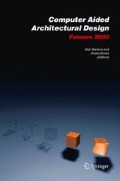Abstract
The rapid developments of economy and urbanization bring great pressure to natural environment and resources, which contribute big challenge to sustainable urban development in high-density urban areas like Hong Kong, China and many other Eastern Asia cities. In these areas, protecting natural landscape resources and enhancing visibility to urban spaces and residential zones has become significant in improving the livability of human settlement. This paper presents a new approach in assessing the visual quality in high-density urban environment. The principal methodology is to quantitatively integrate human visual perception parameters with the visible landscape resources’ characteristics. GIS is employed as the database and technical platform. A residential development in Hong Kong was used as a case study. The approach provides decision making support to urban planning, site layout design, and estate management during the early stage of the schematic design/planning process.
Access this chapter
Tax calculation will be finalised at checkout
Purchases are for personal use only
Preview
Unable to display preview. Download preview PDF.
References
Anderson, L.M., and Herbert W. Schroeder. 1983. Application of wildland scenic assessment methods to the urban landscape. Landscape Planning 10: 219–37.
Batty, Michael. 2001. Exploring isovist fields: space and shape in architectural and morphology. Environment and Planning B: Planning and Design 28: 123–50.
Bishop, Ian D., and David W. Hulse. 1994. Prediction of scenic beauty using mapped data and geographic information systems. Landscape and Urban Planning 30: 59–70.
Blair, William G.E. 1986. Visual impact assessment in urban environments. In Foundations for Visual Project Analysis, eds. Richard C. Smardon, James F. Palmer, and John P. Felleman: 223–44. New York: John Willey and Sons.
Brown, Terry, Tim Keane, and Stephen Kaplan. 1986. Aesthetics and management: bridging the gap. Landscape and Urban Planning 13: 1–10.
Ervin, Stephen, and Carl Steinitz. 2003. Landscape visibility computation: necessary, but not sufficient. Environment and Planning B: Planning and Design 30: 757–66.
He, Jie. 2001. CAD Study in Visual Analysis of the Visual Sustainability for China Urban Natural Landscape Planning. M.Phil. diss., The Chinese University of Hong Kong.
Higuchi, Tadahiko. 1983. The Visual and Spatial Structure of Landscapes. Cambridge: The MIT Press.
Kaplan, Rachel. 1983. The role of nature in the urban context. In Behavior and the Natural Environment, eds. Irwin Altman, and Joachim F. Wohlwill: 127–62. New York: Plenum Press.
Llobera, M. 2003. Extending GIS-based visual analysis: The concept of visualscapes. International Journal of Geographical Information Science 17(1): 25–48.
Moughtin, Cliff, Rafael Cuesta, Christine Sarris, and Paola Signoretta. 2003. Urban Design: Method and Techniques. Oxford: Architectural Press.
Oh, Kyushik. 2001. LandScape Information System: A GIS approach to managing urban development. Landscape and Urban Planning 54: 79–89.
Oh, Kyushik, and Wangkey Lee. 2002. Estimating the value of landscape visibility in apartment housing prices. Journal of Architectural and Planning Research 19, 1–11.
Patsfall, Michael R., Nickolaus R. Feimer, Gregory J. Buhyoff, and J. Douglas Wellman. 1984. The prediction of scenic beauty from landscape content and composition. Journal of Environmental Psychology 4: 7–26.
Pogačnik, Andrej. 1979. A visual information system and its use in urban planning. Urban Ecology 4: 29–43.
Tsou, Jin Yeu, Yucai Xue, Jie He, Benny Chow, and Stephen Yim, 2004. Potential of Developing GIS-based Open System for Visual Analysis of Urban Natural Landscape in Environmentally Responsive Urban Design. Paper for the 3rd Great Asian Streets Symposium (GASS’04). Singapore: Department of Architecture, National University of Singapore.
Turner, Alasdair, Maria Doxa, David O’sullivan, and Alan Penn. 2001. From isovists to visibility graphs: a methodology for the analysis of architectural space. Environment and Planning B: Planning and Design 28: 103–21.
Author information
Authors and Affiliations
Editor information
Editors and Affiliations
Rights and permissions
Copyright information
© 2005 Springer
About this paper
Cite this paper
He, J., Tsou, J.Y., Xue, Y., Chow, B. (2005). A Visual Landscape Assessment Approach for High-density Urban Development. In: Martens, B., Brown, A. (eds) Computer Aided Architectural Design Futures 2005. Springer, Dordrecht. https://doi.org/10.1007/1-4020-3698-1_11
Download citation
DOI: https://doi.org/10.1007/1-4020-3698-1_11
Publisher Name: Springer, Dordrecht
Print ISBN: 978-1-4020-3460-2
Online ISBN: 978-1-4020-3698-9
eBook Packages: Earth and Environmental ScienceEarth and Environmental Science (R0)

